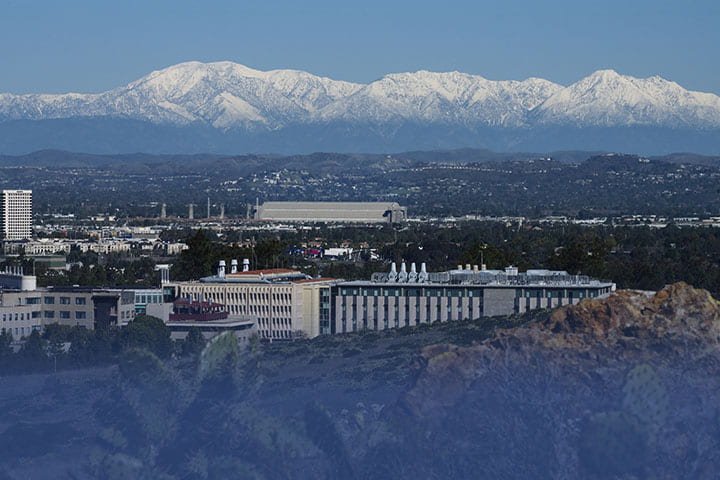Special Report: Clearing the Air

April 24, 2024 - Welcome to this special report highlighting clean and sustainable energy research at the University of California, Irvine.
As UC Irvine was being established in the mid-1960s, its leaders envisioned an institution designed with an architecture – both figuratively and literally – to address emerging environmental consequences of the industrial age.
In those early days, Scott Samuelsen, a professor with expertise in mechanical, aerospace and environmental engineering, was charged with building strong research capabilities focusing on water and air quality and resources. Beginning in 1970 with the establishment of the UCI Combustion Laboratory – a center dedicated to the reduction of emissions from gas turbine engines – Samuelsen went on to develop and launch a series of what he calls “cornerstone” organizations tackling different aspects of clean and sustainable energy research.
In 1992, he led the founding of PARCON – the Pacific Rim Consortium on Energy, Combustion and the Environment. The group included academic institutions and industrial partners from seven countries, which together explored a zero-emission alternative to both air pollutants and greenhouse gases.
Samuelsen oversaw the launch of the National Fuel Cell Research Center at UC Irvine in 1998 with support from the U.S. Department of Energy and the California Energy Commission. Two years later, he presided over the opening of the Advanced Power and Energy Program to address the energy spectrum from source to distribution to utilization and, ultimately, the environmental impacts of energy consumption. In 2018, a further piece of the puzzle, this time dealing with the electrochemistry of battery-electric and hydrogen-powered transportation and the power grid, was put in place with the opening of the Horiba Institute for Mobility and Connectivity.
This report reaches into laboratories and learning spaces connected with these centers to show how students and faculty researchers are collaborating to create solutions to climate change and environmental degradation, two of the most important problems humanity faces. Learn about the latest clean energy technologies through the stories, photos and videos in this special report. Share this content freely with your friends and associates and, most importantly, get involved.
- Brian Bell / UCI
